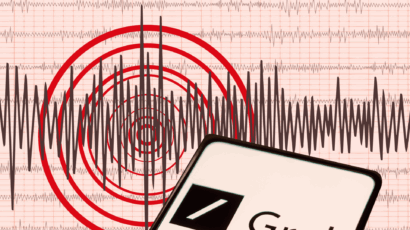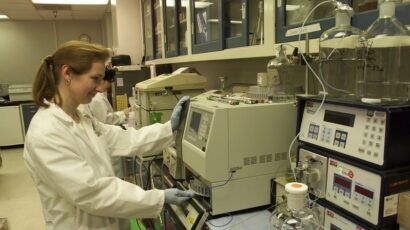Let science be science again
By Yangyang Cheng | April 4, 2017
 Marching for science.
Marching for science.
On April 22, I will be marching for science.
As a particle physicist, I wish I had been able to say this earlier, or with ease. Instead, during the weeks since the idea of a march for science was first suggested in late January, I needed time to contemplate the feedback on the march—including much thoughtful criticism from the scientific community, which weighed in my decision about whether or not I should participate.
One side of the argument discourages the march by cautioning against potential politicizing of science. As the geologist Robert S. Young wrote in the New York Times, and was echoed by many of my colleagues on social media, a march reinforces the narrative that scientists are a special interest group, and further alienates scientists and scientific findings from a significant portion of the population who are already skeptical. Will a march for science help science?
Another side of the raucous debate supports the idea of the march, but directs its criticism at the march’s organization, in which discussions of diversity and inclusion reflect historical injustices, structural disparities, and “long-lingering tensions within the scientific community.” Can I march for science with a clear conscience when members of underrepresented groups, including myself, still face higher hurdles and narrower paths in our careers in science?
Interestingly, both of these criticisms reflect a common misconception: that science is the elite pursuit of the privileged few. A caricature of science depicts people of means and leisure, bred on a rich diet that enhances their genetic gifts, donning lab coats in the same hue as their skin tone, untainted by the white chalk dust drifting from obscure equations on the blackboard. These folks, mostly men, fiddle on futuristic gadgets in secluded rooms inside ivory towers, high above the dwellings of earthly mortals who are not worth the scientists’ time or attention.
However, I know that if I were a white man born and raised in America, I might not have become a scientist. The opportunities and resources America would have offered me might very well have led me to pursue another career path based on my broad interests as a child; those opportunities and resources were not available to me in China, but, fortunately, they were not prerequisites for a career in science. Science is a great equalizer, not a privilege. I believe in the promise of science because I have lived it. I’ll be marching as a personal testament to the promise, and to help keep it alive.
Science as a path out of adversity. I grew up in a medium-size city in southeastern China, an only child raised by a single mother. I knew from an early age that, among the few options for personal advancement, an education in science, math, or engineering presented the most plausible path. A career in sports or music required physical talent that I did not have. Going into business demanded resources and connections that my family could not provide. Legal practice was a nascent profession for a country still struggling with the rule of law. The pursuit of science was the easy choice, not because the subject is simple, but because—even with gender biases in society and discouragements from my family —science offered the lowest barrier to entry, as well as the broadest opportunities from the knowledge and skills obtained. In fact, I grew up hearing a popular saying, “Study well math, physics, and chemistry, and you can walk around the world unafraid.”
That saying—a succinct, rhyming 12 characters in its original Chinese—was passed down from my parents’ generation, a generation haunted by the memory of the great famine of the late 1950s. When basic agricultural science and factual evidence of crop production were twisted and ignored by the government to fit a political agenda, tens of millions of people starved to death. The same generation came of age during the Cultural Revolution, when education ground to a halt and science was seen as a Western conspiracy. Schools were closed. Intellectuals were persecuted. Books were burned. Some of the bravest souls kept the spark of science alive from dying embers. They studied math and science late at night under dim oil lamps after a long day of labor, using textbooks smuggled into farms and factories at great risk. After a decade of turmoil and destruction, many of the survivors became leaders of science, education, industry, and government in a recovering and eventually rising China; some of them became my college professors.
I graduated from college in 2009, and came to the United States to pursue my PhD in physics at the University of Chicago. In some of the darkest periods of my personal life before then, the idea of America kept me alive, and the pursuit of science lit my path across the Pacific. Alexander Hamilton wrote his way out of St. Croix, the tiny island destroyed in a hurricane in 1772, and into the American Revolution. I, along with the generation before me and many of my peers, “scienced” my way out of the limiting circumstances of my upbringing—and into the American dream.
One of my college classmates who also came to the United States for graduate studies was a boy named Jiang He, the graduate student speaker at Harvard University’s 2016 commencement ceremony. Born and raised in a pre-industrialized village in south China where a childhood spider bite was treated with fire, Jiang received his PhD in biology from Harvard in 2016, and spoke movingly of the scientific community’s ability and responsibility to reach out and help the underdeveloped parts of the world. When the bird flu pandemic struck his childhood village several years back, Jiang found out that simple teachings of the difference between the common cold and the much more dangerous flu, and basic practices of separating different species of livestock, greatly reduced the spread of the disease. Science is a great equalizer because it not only empowers the individual, but also lifts whole communities. It is often less-developed regions that more acutely suffer from the lack of access to science—and more significantly benefit from science’s equalizing power.
The great equalizer. Science is a human endeavor. The past and present of science are as magnificent and promising as those of the human race, and inadvertently bear our species’ complexity and flaws. As a young Chinese woman working as a physicist in the United States, I am constantly reminded of my privileges and my vulnerabilities, both within my profession and in society at large. I scienced my way out when other doors were closed, but the gateways to science would never have been open to me had I been aborted because I was a girl, or refused access to education because I was a girl, or denied entry into the United States if the Chinese Exclusion Act was still on the books.
The poet Langston Hughes eloquently wrote of the promise and failings of America: “America never was America to me / And yet I swear this oath — / America will be!” As an “immigrant clutching the hope I seek,” I see a parallel between the idea of America and that of science. Despite the tainted history and current flaws of science, I, as a member of the underrepresented, still place my unwavering faith in its power as the great equalizer.
There are few simpler or more explicit ways to demonstrate the equalizing power of science than a global march for science. Popular marches of the masses are inherently democratic. They can be effective in raising awareness, building coalitions, and driving policy change in favorable directions. Marches do sometimes fail, and a march should never be the totality of the effort. However, there is no denying the power of marches; just look at how oppressive regimes fear marches, and how hard they try to prohibit them.
There is a difference between the issues science as a profession needs to address, and the ones a “March for Science” can address. A march is where size matters. It is most effective when the message is simple, and access is easy—enabling people to identify with the cause, put their bodies in the street, and use their very presence as a political statement.
When discussions of diversity and inclusion fall into the trap of comparative victimhood, the narrative can often be more alienating than it is welcoming. A march is not an academic exercise. Not all supporters of the science march are well-informed about the historical ills and structural flaws within the scientific community, nor should their lack of specific knowledge or awareness be judged as a moral deficit or disqualifier, as some of the more heated debates seem to suggest. Not all supporters of the science march agree on other issues beyond their shared support for science, nor should they be subject to an ideology purity test to be welcome. It speaks to the beauty and strength of a march to be able to bring together people from diverse backgrounds and viewpoints for a shared cause. The fact that the March for Science has become a global movement, with more than 400 satellite marches around the world, shows that support for science is a unifying message that transcends geopolitical boundaries.
Marching to support science. Nature has no political ideology, nor should the interpretation of nature. Traditionally in the United States, basic research has enjoyed bipartisan support because science is nonpartisan. Anti-science views exist on both ends of the political spectrum. The limit to how much grain an acre of land could yield is not a weakness unique to western imperialism, as Communist propaganda in 1950s-era China claimed. Climate change is not a hoax made up by the Chinese, and vaccines do not lead to autism.
There have always been opponents of science who try to smear or discredit facts that counter their interest-driven agenda. Supporters of science cannot let the other side frame the debate. Staying silent for fear of being misunderstood is not self-preservation; it is unilateral disarmament. The battle lines are drawn between truth and falsehoods, regardless of rhetoric or ideology. In World War II, African-Americans and Japanese-Americans fought alongside white Americans under the same allied banner. When ignorance is touted as a virtue, and anti-intellectualism is encroaching on the very fabric of our society, the fight for the preservation and advancement of science calls for a unified effort from the scientific community, and from supporters of science of every color and creed.
I am the great-granddaughter of women with bound feet, for whom learning to read was a revolutionary act. I am a particle physicist at an Ivy League institution, working on the most powerful particle accelerator in the world. On April 22, I will be marching for science, for the promise of science as the great equalizer, for what it has been to me, and for what it can still be to many—to the privileged and the marginalized, to all. To paraphrase Langston Hughes, let science be science again, “let it be the dream it used to be.”
Together, we make the world safer.
The Bulletin elevates expert voices above the noise. But as an independent nonprofit organization, our operations depend on the support of readers like you. Help us continue to deliver quality journalism that holds leaders accountable. Your support of our work at any level is important. In return, we promise our coverage will be understandable, influential, vigilant, solution-oriented, and fair-minded. Together we can make a difference.
Topics: Voices of Tomorrow
















I am quarantined in Wuhan for over a month. You’re writing has sustained me in an otherwise bleak reality. Thank you.